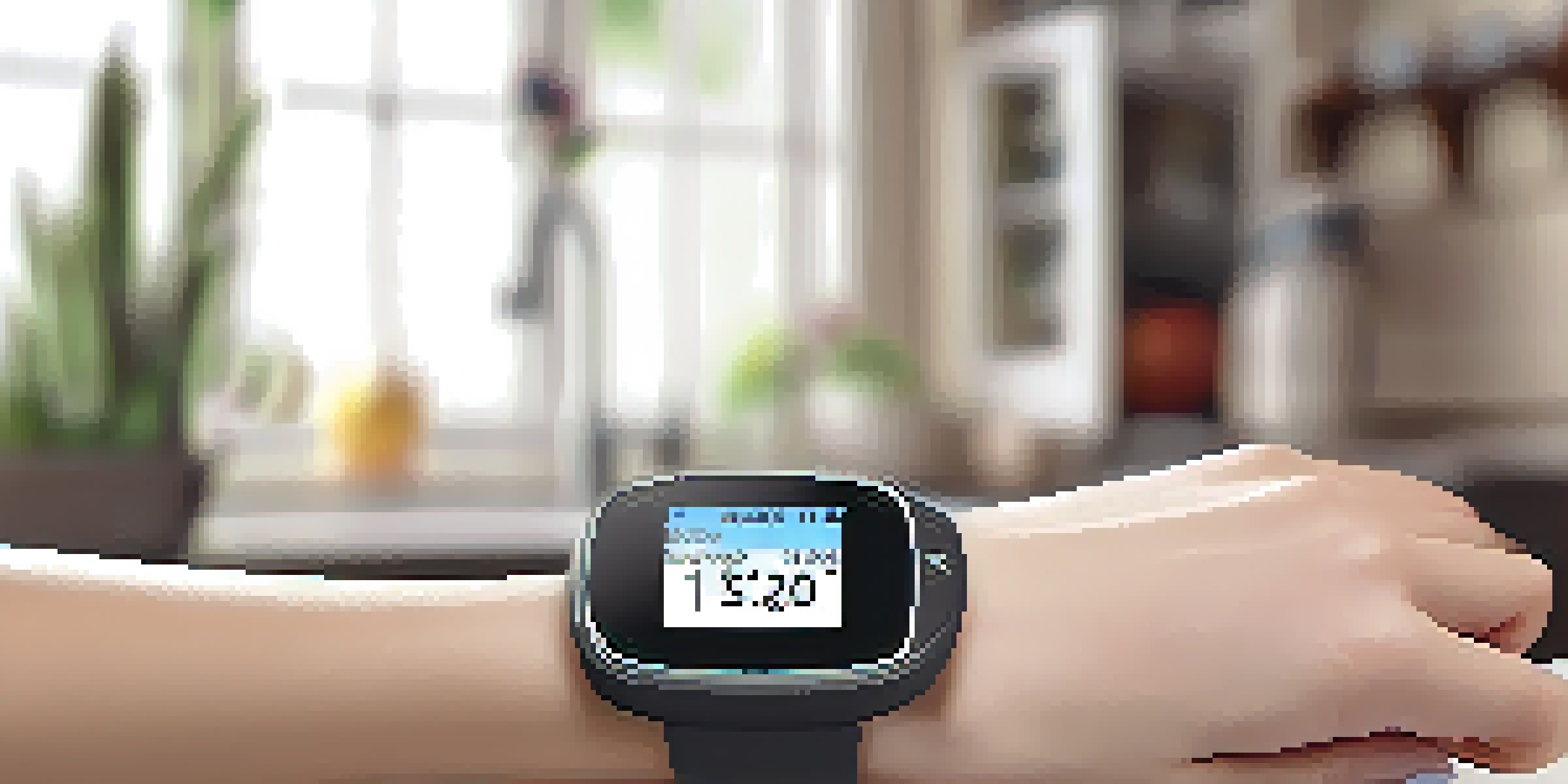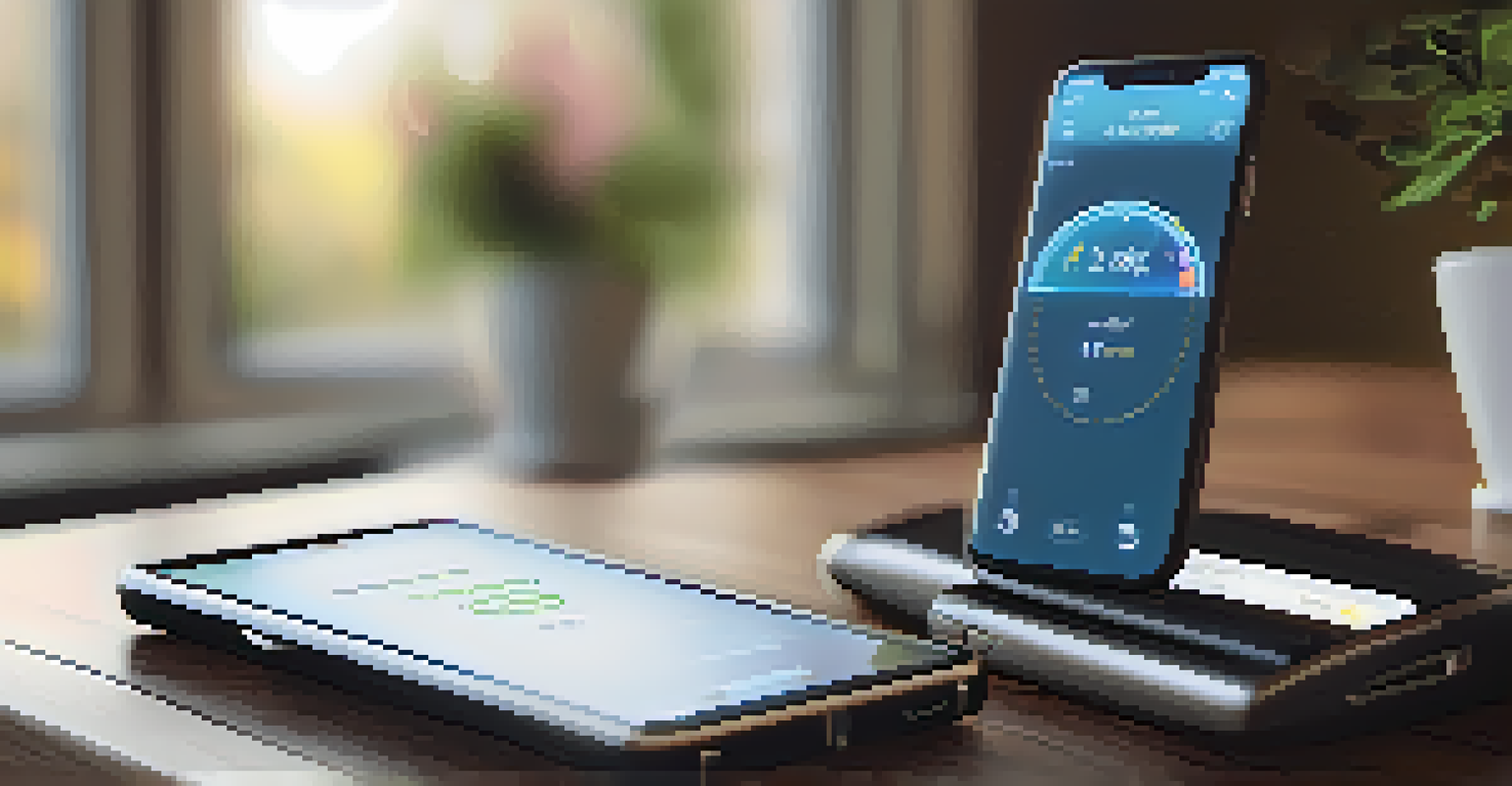Digital Tools for Managing Diabetes: Apps and Devices

Understanding Diabetes Management in the Digital Age
Managing diabetes can feel overwhelming, but digital tools are changing the game. These resources provide real-time data, helping patients track their health more effectively. With the right apps and devices, managing diabetes can be less about stress and more about empowerment.
Technology is best when it brings people together.
Many people with diabetes find that technology not only enhances their knowledge but also simplifies their daily routines. For instance, continuous glucose monitors (CGMs) offer insights into blood sugar levels without the need for constant finger pricks. This means more convenience and improved health outcomes.
Ultimately, the goal of these digital tools is to provide better control and understanding of diabetes. By utilizing technology, individuals can make informed decisions about their health, leading to a more balanced lifestyle. Let's dive into the specific tools that can make a difference!
Key Features of Diabetes Management Apps
When selecting a diabetes management app, it’s essential to know what features to look for. Many apps offer glucose tracking, medication reminders, and food logging, which can be invaluable for maintaining stable blood sugar levels. These functionalities help users stay organized and accountable.

Another crucial aspect is the ability to sync with other devices. Many apps can connect to blood glucose meters and fitness trackers, providing a comprehensive view of health data. This integration allows for more informed decisions and better communication with healthcare providers.
Digital Tools Empower Diabetes Care
Technology, such as apps and continuous glucose monitors, provides real-time data and insights, making diabetes management more accessible and less stressful.
Finally, user-friendly interfaces are vital for long-term engagement. Apps should be intuitive and easy to navigate, ensuring that users can quickly input data and access insights. The easier the app is to use, the more likely individuals will stick with it and reap the benefits.
Popular Diabetes Management Apps to Consider
There are several diabetes management apps that stand out in the crowded marketplace. Apps like MySugr and Glucose Buddy are popular for their comprehensive tracking capabilities and user-friendly designs. Both provide excellent resources for logging meals, medications, and physical activity.
The greatest discovery of my generation is that a human being can alter his life by altering his attitude.
Another noteworthy app is My Diabetes Home, which focuses on connecting users with their healthcare teams. It allows for easy sharing of data, making it simpler for healthcare professionals to offer tailored advice. This collaboration can enhance the overall management of the condition.
Lastly, don't overlook the benefits of apps like Carb Manager, which assist with carbohydrate counting. Understanding carb intake is crucial for blood sugar control, and these apps make it easier to track your food choices effectively. By exploring various options, users can find the app that best meets their unique needs.
The Rise of Continuous Glucose Monitors (CGMs)
Continuous glucose monitors (CGMs) are revolutionizing how diabetes is managed. These devices provide real-time blood glucose readings, alerting users to highs and lows throughout the day. This proactive approach allows for immediate adjustments to diet or insulin, which can prevent complications.
Many CGMs also come with smartphone compatibility, allowing users to track their levels through an app. This seamless integration of technology means you can have your health data at your fingertips, making it easier to share with healthcare providers during appointments.
Key Features Enhance User Experience
Effective diabetes management apps include glucose tracking, medication reminders, and user-friendly interfaces, fostering long-term engagement and better health outcomes.
Additionally, the convenience of wearing a CGM means no more frequent finger pricks. For many, this translates into a less painful and more manageable approach to monitoring diabetes. As technology continues to advance, CGMs are becoming more accessible and effective for everyday use.
Smart Insulin Pens: A Game Changer for Diabetes Care
Smart insulin pens are another innovative tool for managing diabetes. These devices not only deliver insulin but also track dosage data, helping users understand their patterns better. This insight can lead to more informed decisions about insulin administration and overall diabetes management.
Some smart pens even connect to mobile apps, allowing users to log their doses automatically. This feature eliminates the need for manual tracking, reducing the chances of errors and providing a clearer picture of insulin usage. It’s a small change that can make a significant impact.
Moreover, smart insulin pens can provide reminders for doses, ensuring users adhere to their schedules. It's like having a personal assistant for your diabetes management—keeping you on track while making the process less cumbersome.
Wearable Technology: Tracking Activity and Health
Wearable technology plays a pivotal role in managing diabetes by monitoring physical activity and overall health. Fitness trackers can provide insights into daily steps, exercise routines, and even sleep patterns. This data can be crucial for understanding how lifestyle choices impact blood sugar levels.
By integrating wearables with diabetes management apps, users can analyze how exercise affects their glucose levels. For instance, a brisk walk can lead to lower blood sugar, and knowing this can motivate individuals to stay active. It's all about leveraging technology to enhance health.
Future Innovations Transform Treatment
Advancements like AI and telehealth are poised to personalize diabetes care, enabling individuals to manage their condition proactively and improve their quality of life.
Furthermore, many wearables come equipped with heart rate monitors and stress-tracking features. Managing stress is vital for those with diabetes, as fluctuations in stress levels can affect blood sugar control. With these insights, users can take proactive steps toward a healthier lifestyle.
The Future of Diabetes Management Through Technology
The future of diabetes management looks promising, thanks to ongoing technological advancements. Innovations like artificial intelligence (AI) are being integrated into diabetes care, helping to predict blood sugar fluctuations based on user data. This predictive capability could revolutionize how individuals manage their condition.
Telehealth is also gaining traction, allowing users to consult with healthcare professionals remotely. This convenience means individuals can receive timely advice without the hassle of in-person visits. It fosters a continuous dialogue between patients and providers, enhancing care.

As technology continues to evolve, we can expect more personalized solutions tailored to individual needs. The ultimate goal is to empower those living with diabetes, providing them with the tools they need to lead fulfilling lives. Embracing these advancements can make a world of difference.